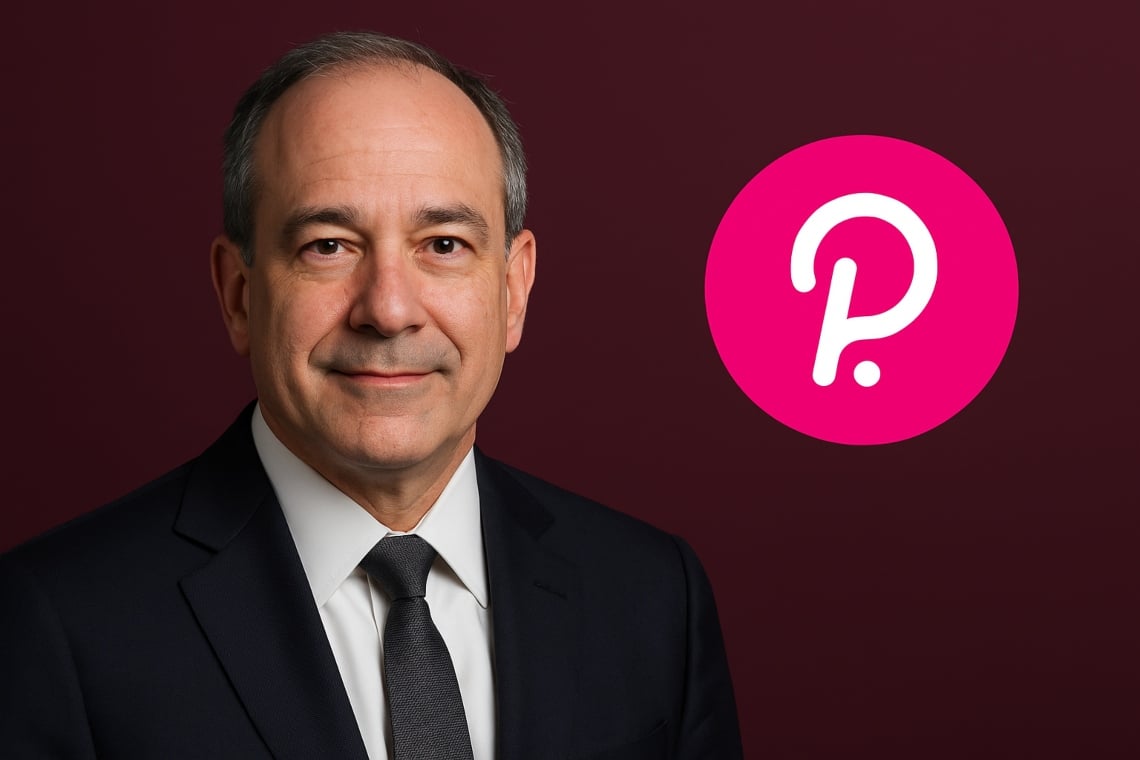The Cryptonomist interviewed Dave Sedacca, the Lead of Polkadot Capital Group. He also sits as Director of Finance at Parity Technologies, the core development team behind Polkadot.
He leads Parity’s financial strategy, spanning treasury management, planning, and institutional engagement. A long-time believer in emerging tech and crypto, Dave has been actively involved in the space since 2017. Prior to joining Parity, he worked across multiple sectors, driving financial and commercial strategy
1. How do you see institutional adoption of digital assets evolving in the next 2–3 years, and what barriers still need to be removed for wider participation?
Institutional adoption is moving from the edges of capital markets into the core. ETFs will broaden retail access, but the more transformative shift will be pensions, retirement funds, and insurers allocating directly. These are trillion-dollar pools where even small percentages change market structure. Alongside that, I expect progress in settlement infrastructure. Networks like SWIFT are piloting 24/7 cross-border settlement, and blockchain can accelerate that trend. The biggest barriers remain regulatory clarity and operational confidence that digital assets meet fiduciary standards.
2. Education for TradFi Players – what are the most common misconceptions you encounter when speaking with these institutions?
The misconception isn’t whether digital assets are legitimate, but how to differentiate them. Many institutions see a sea of “altcoins” beyond Bitcoin and Ethereum without clear frameworks. Too much attention is placed on short-term DeFi metrics like TVL, yields, volumes without asking: how valuable is that liquidity if it isn’t collateralized? How resilient is the infrastructure? At Polkadot Capital Group, we emphasize that long-term value rests on security, scalability, governance, and native interoperability. These fundamentals matter more than short-term activity.
3. Real-world asset (RWA) tokenization is gaining momentum—what types of assets are most likely to be tokenized first at scale, and why?
Today, about $30 billion in real-world assets are on-chain, with nearly $17 billion in private credit driven largely by Figure. Private credit made sense as the first wave: strong demand for yield, with tokenization adding efficiency and transparency. We’re also seeing tokenized equities, though much of it is synthetic rather than fully backed. A bigger near-term opportunity lies in CLOs, a $1 trillion plus market where tokenization could streamline issuance and liquidity. Treasuries and money markets will also scale quickly as the core collateral naturally is suited to the programmable, 24/7 settlement.
4. What role do you expect DeFi and stablecoins to play in institutional portfolios, and how might regulatory clarity accelerate their adoption?
Stablecoins are becoming the operational cash leg for digital markets, used as a reserve and settlement asset that moves 24/7 with clear redemption rights. They unlock efficiency in payments and collateral management, though governance questions remain around centralized control, attestations, and protections. DeFi is the infrastructure layer: programmable settlement, transparent collateralization, and continuous markets. In the U.S., the GENIUS Act has set baseline guardrails for stablecoins, while initiatives like Project Crypto provide pathways to test DeFi under regulatory oversight. Together, these frameworks give fiduciaries confidence that stablecoins and DeFi can move from experiments into scalable compliant rails.
5. Can you share more about Polkadot Capital Group’s partnerships with brokers and asset managers, and how they are helping to bridge the gap between TradFi and DeFi?
With brokers and RIAs, our focus is on listening, education, and exploring DeFi opportunities, understanding their digital-asset journey, what questions clients are asking, and where gaps in clarity exist. They help us identify areas where clients need more confidence, and it’s encouraging to see a shared North Star: staying ahead of innovation while protecting investors. That’s why we’ve leaned into webinars, speaker panels, and direct conversations to make Polkadot Capital Group a trusted partner.
On the asset management side, institutions want regulatory clarity as much as they want exposure. Some will access the market through ETFs, while others are evaluating digital asset trusts and structured products that balance yield with risk appetite, without the friction of managing private keys. The value is not just in access, but in infrastructure that can support collateralization, liquidity, and tokenization at scale.
6. Why is Polkadot uniquely positioned to support the future of capital markets compared to other blockchain ecosystems?
Capital markets represent hundreds of trillions, and no single chain will capture all of it. Institutions want optionality. What sets Polkadot apart is that it has been purpose-built for a decade with fundamentals in mind: security, scalability, and interoperability. Security comes from its shared validator set, which protects every chain connected to the network. Scalability is delivered through parallel execution, already tested at over 140,000 transactions per second across parachains. Interoperability is native to the protocol, enabling assets and messages to move seamlessly across chains without the fragmentation and bridge risks seen elsewhere. Looking forward, Polkadot’s evolution into JAM (Join-Accumulate Machine) introduces a lighter, modular architecture capable of scaling parallel workloads ideal for tokenized assets or high-frequency settlement. Add in the roadmap for enhanced privacy features, and you have a decentralized infrastructure built to evolve with capital-market needs.
7. If you had to forecast one major shift in capital markets driven by blockchain technology over the next five years, what would it be?
The next major shift will be the rise of autonomous AI agents operating directly on-chain. Markets are already largely algorithmic, but those algos are centrally managed by humans. The leap comes when AI agents act as market participants posting collateral, providing liquidity, and managing positions 24/7 under programmable rules. Global collateral and short-term funding markets represent tens of trillions. If even 10–20% moves on-chain, that’s $2–4 trillion of flows managed by agents within five years. It would fundamentally reshape how liquidity and collateral circulate through the system.
